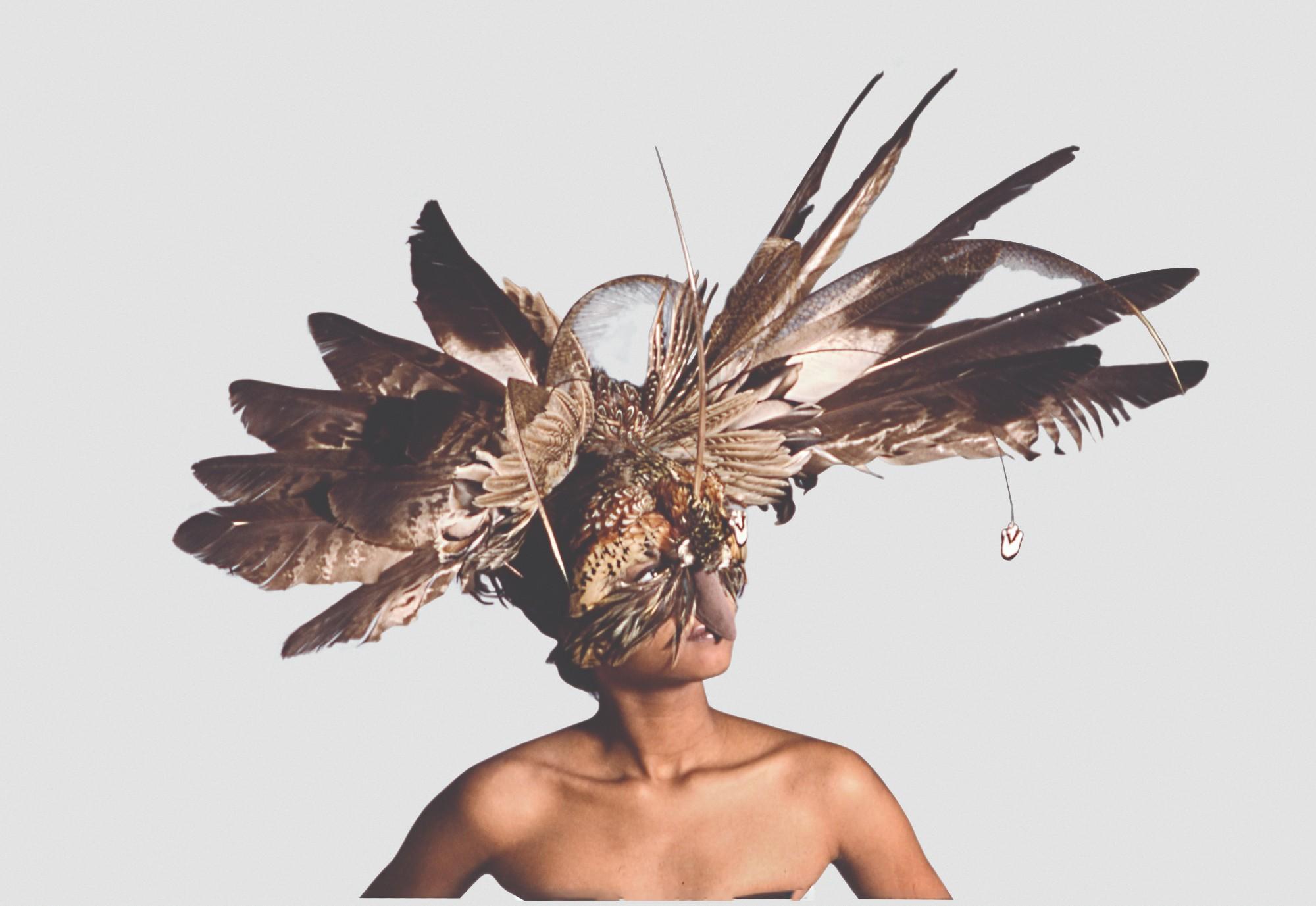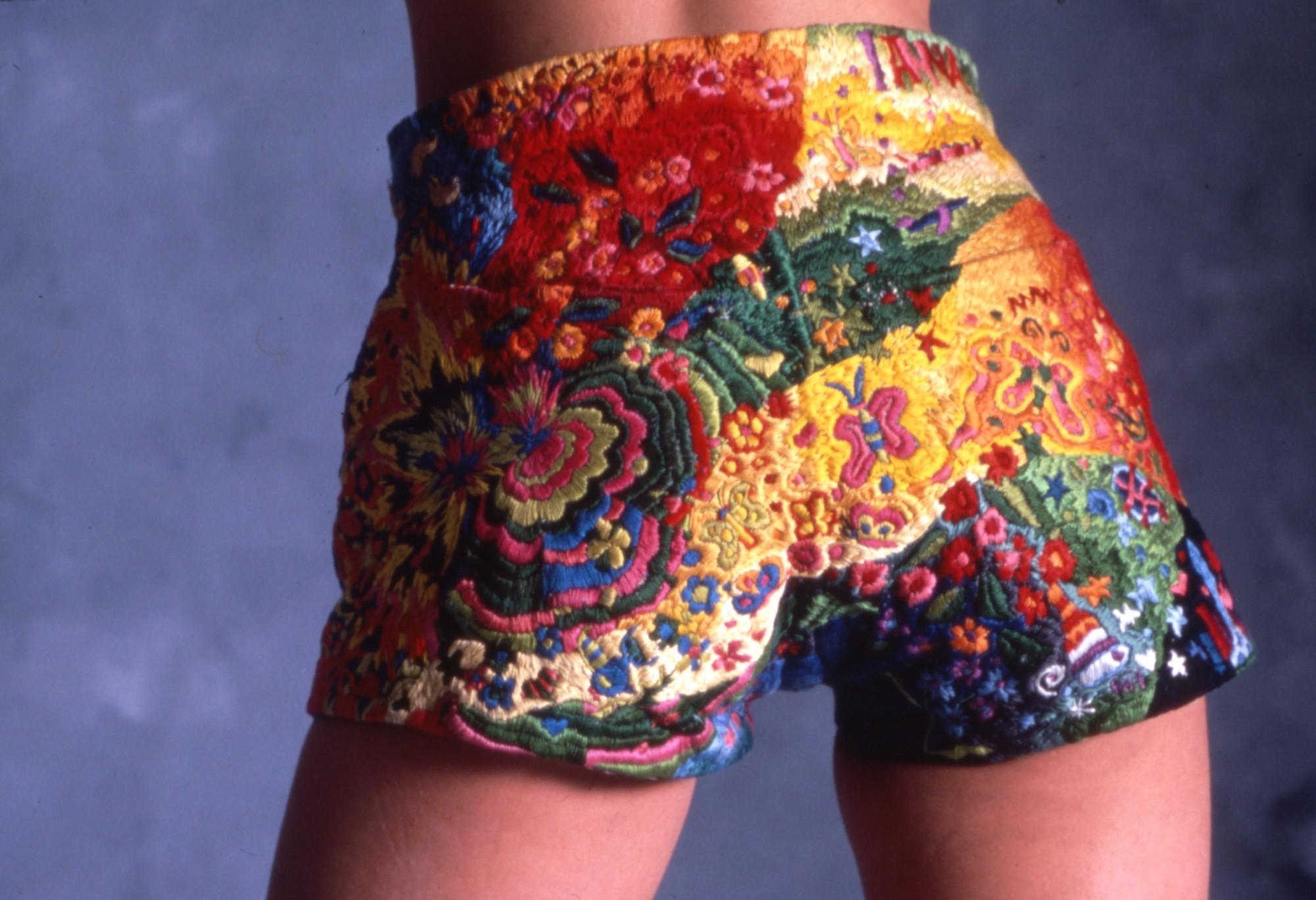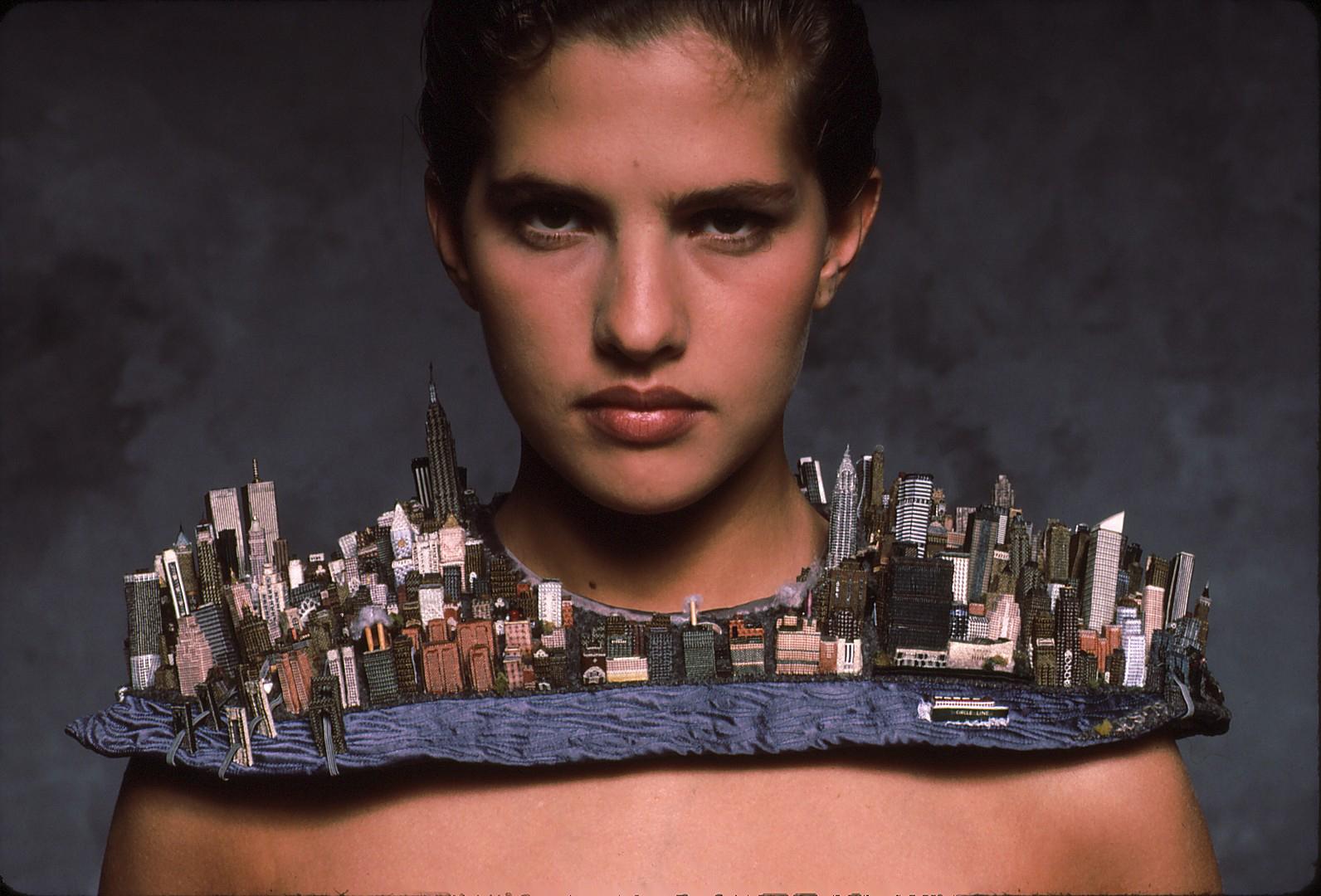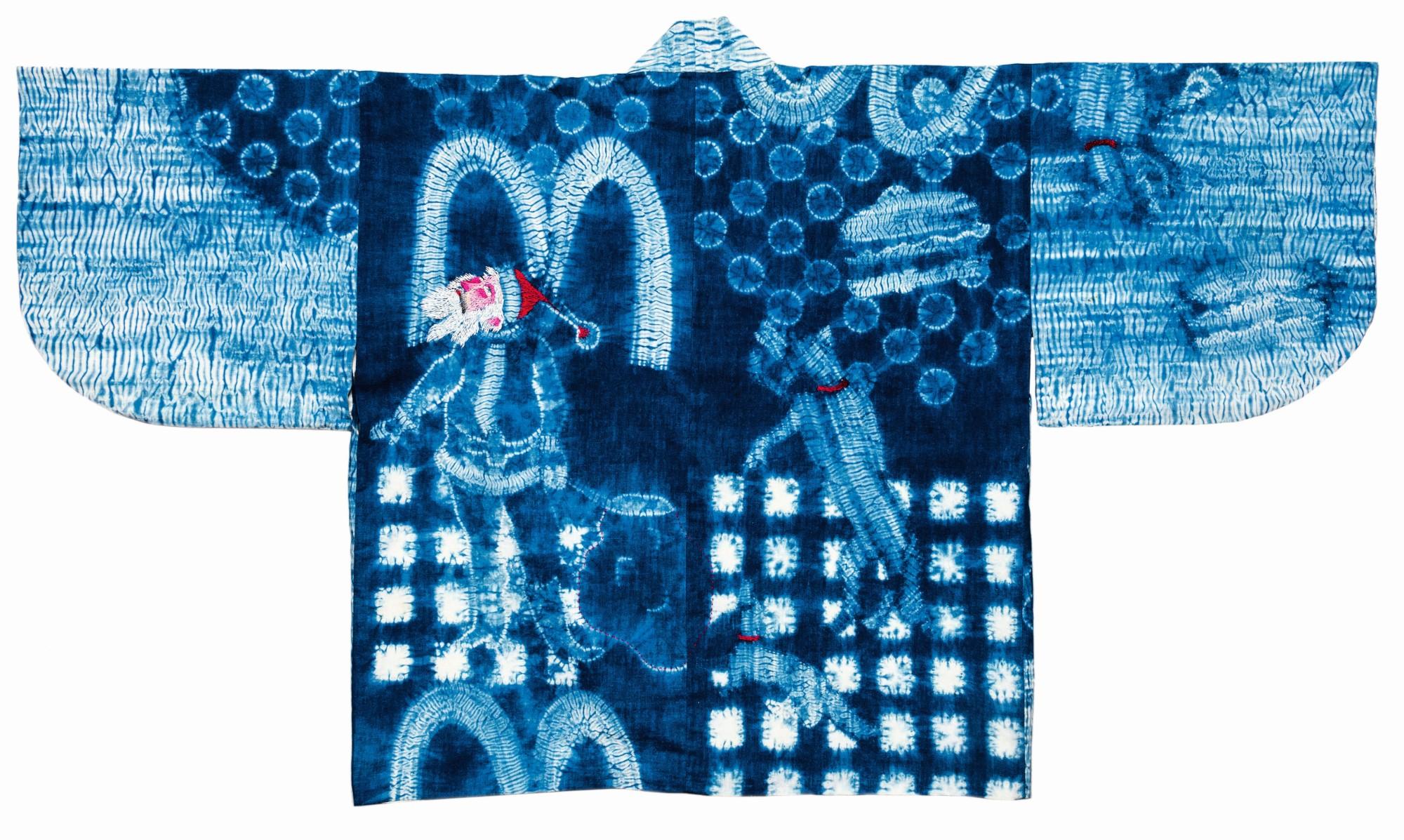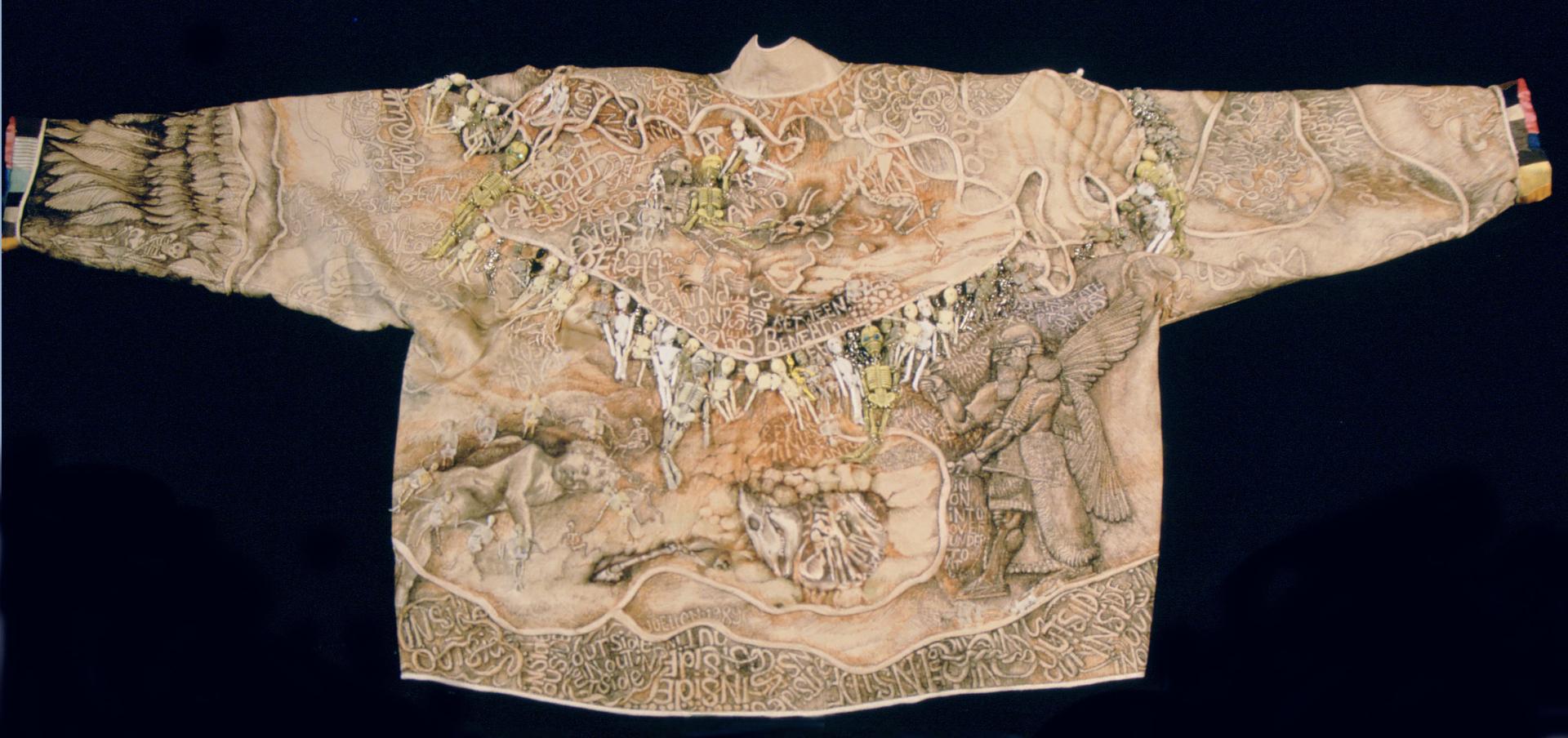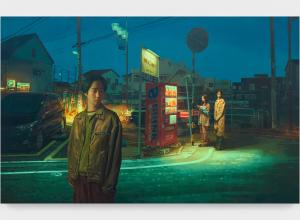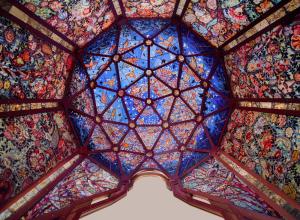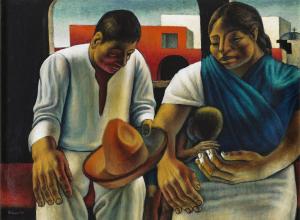The champions of Art to Wear during the early years were a few forward-thinking museums, among them New York’s Museum of Contemporary Crafts (Museum of Art and Design), collectors, and galleries such as Sandra Sakata’s Obiko, founded in 1972 in San Francisco, and Julie Schafler Dale’s Julie: Artisans Gallery, which opened the following year on Madison Avenue in New York. For over 40 years, Dale’s gallery was a premier destination for presenting one-of-a-kind wearable works by American artists. Through her gallery installations and rotating window displays, she gave visibility to the Art to Wear movement. In 1986, she brought further recognition to the art form by publishing the seminal book Art to Wear—from which the title of this exhibition is taken—which provided in-depth profiles of artists alongside photographs by Brazilian fashion photographer Otta Stupakoff. Dale’s gallery closed in 2013.
Off the Wall is arranged in nine sections; the titles of some are derived from popular music of the ‘60s and ‘70s to suggest the wide-ranging concerns of the artists. The introductory section, The Times They Are A Changin’ (Bob Dylan, 1964), contains works by Lenore Tawney, Dorian Zachai, Claire Zeisler, Ed Rossbach, and Debra Rapoport to illustrate how textile artists in the late ‘50s and ‘60s liberated tapestry weaving from the wall, adapting it to three-dimensional sculptural forms inspired by pre-Columbian weaving. In 1969, a group of five students at Pratt Institute studying painting, sculpture, industrial design, multimedia, and graphic design taught each other how to crochet, leading to remarkable outcomes. Janet Lipkin, Jean Cacicedo, Marika Contompasis, Sharron Hedges, and Dina Knapp all created clothing-related forms that they would describe as wearable sculpture, thus establishing a cornerstone of the Art to Wear movement. Included in this section is a wool crochet and knit Samurai Top, 1972, by Sharron Hedges, modeled by the young Julie Dale for the book Creative Crochet, authored by two of the artist’s friends, Nicki Hitz Edson and Arlene Stimmel.
The next section, Good Vibrations (Beach Boys, 1966), traces the migration of many of these young artists from the East Coast to the West Coast where they joined California’s vibrant artistic community and connected with Sandra Sakata’s Obiko. A pair of colorful denim hand-embroidered mini shorts by Anna VA Polesny embroidered while traveling conveys this new youthful spirit. Pacific Rim influences are evident in the Japanese kimono form as a blank canvas offering infinite possibilities for pattern and design. Marika Contompasis’s machine-knitted kimono made of rectangular sections, Trout-Magnolia Kimono, 1977, and Janet Lipkin’s Mexico at Midday, a coat made in 1988 are exceptional examples. The section also looks at the art of performance, reflected in Ben Compton and Marian Clayden’s Nocturnal Moth, 1974, inspired by Federico Fellini’s film La Dolce Vita (1960). A range of counter-culture influences, evoking ceremony and spirituality, pervade this section.




